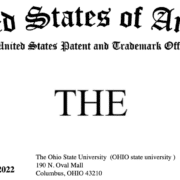Understanding the Spectrum of Trademark Strength
When it comes to securing a trademark in the United States, not all marks are created equal. As an intellectual property attorney with years of experience navigating the complexities of trademark law, I’ve witnessed firsthand the critical role that the inherent strength of a trademark plays in its registrability and defense. Trademarks are generally categorized along a spectrum of strength, ranging from generic to fanciful. Each category bears its own set of challenges and advantages in the realm of trademark protection.
1. Generic Trademarks
At the lowest end of the trademark strength spectrum are generic terms. These are common words or phrases used to describe a product or service (e.g., “Bicycle” for bicycles). Generic terms are inherently incapable of functioning as trademarks because they fail to identify the source of a product or service. Simply put, you cannot monopolize common language that everyone needs to describe an offering. Thus, generic terms are not registrable as trademarks.
2. Descriptive Trademarks
Moving one step up the spectrum, we find descriptive trademarks. These directly describe a characteristic or quality of the product or service (e.g., “Cold and Creamy” for ice cream). Descriptive marks are not initially registrable unless they have acquired distinctiveness through extensive use in commerce. This acquired distinctiveness is also known as “secondary meaning.” For example, “American Airlines” has become distinctive over time through prolonged and substantial use in the market. Obtaining trademark protection for a descriptive mark can be a challenging process, requiring substantial proof of this secondary meaning.
3. Suggestive Trademarks
Suggestive trademarks hint at the nature or quality of the goods or services without directly describing them, requiring some imagination on the part of the consumer (e.g., “Netflix” for streaming services). These marks are inherently distinctive and are thus easier to register than descriptive marks. Suggestive trademarks are strong because they are memorable and still inform the consumer about the nature of the product or service in a non-direct way.
4. Arbitrary Trademarks
Arbitrary trademarks consist of words or images that are in common linguistic use but do not have any inherent connection to the product or service they mark (e.g., “Apple” for computers). Since these terms are common words that are repurposed in a way unrelated to their typical meaning, they are considered strong marks. Arbitrary marks are immediately protectable and are favored in registrations because they naturally serve to identify the unique source of products or services.
5. Fanciful Trademarks
At the pinnacle of trademark strength are fanciful marks. These are invented words that have no dictionary or conventional meaning prior to their use as trademarks (e.g., “Kodak” for cameras). Fanciful marks are the easiest to register and protect because of their inherent uniqueness and distinctiveness. Being completely made-up, they are highly effective at brand identification and are afforded the widest scope of protection under U.S. trademark law.
Conclusion
The journey to trademark registration varies significantly based on the type of mark you choose. Entrepreneurs and businesses should aim for at least suggestive trademarks, if not arbitrary or fanciful, to maximize their trademark protection opportunities. As an intellectual property attorney, I advise clients to consider the inherent strength of a potential trademark from the very beginning of the brand development process. Making the right choice early on can enhance your brand’s protection and prevent costly legal battles over trademark rights.
By understanding the different types of trademarks and their respective strengths, businesses can more effectively navigate the complexities of trademark registration and enforcement. Whether you’re just starting out or looking to expand, always consider how your trademark stacks up against the spectrum of strength.








